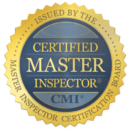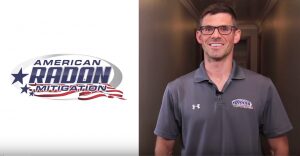
by Desmond Thornton | Nov 1, 2025 | First Home Buyers
Don’t Let Home Inspection Mistakes Derail Your First Purchase
Buying your first home is exciting — especially in markets like Chattanooga, TN and Ringgold, GA, where historic properties and growing neighborhoods attract many first-time buyers. But with excitement often comes inexperience, and skipping key steps in your home inspection can lead to expensive surprises.
According to national housing data, 86% of home inspections uncover at least one issue that buyers didn’t notice on their own. In Chattanooga, where heavy rainfall and older housing stock are common, those issues often involve drainage, foundation movement, and moisture intrusion.
Below, the experts at Thornton Home Inspections outline the most common home inspection mistakes — and how first-time buyers can avoid them.
Skipping the Home Inspection to “Save Time”
In competitive markets, some first-time buyers are tempted to waive their inspection to make their offer more appealing. However, this decision often backfires.
Without a professional inspection, you may overlook structural damage, electrical hazards, or hidden water issues — repairs that can cost thousands after closing.
Local tip: In Ringgold, where termite activity is high due to Georgia’s humid climate, skipping an inspection can mean inheriting an active infestation. Always make your offer “contingent upon a satisfactory inspection.”
Choosing the Cheapest Inspector Instead of the Most QualifiedHow Market Conditions Influence Inspection Demand
A low inspection fee can be tempting, but it’s often a red flag.
Certified inspectors — like those at Thornton Home Inspections — invest in ongoing education, advanced tools (such as infrared cameras), and insurance coverage that protects you.
Pro insight: Always confirm that your inspector is licensed in Tennessee and/or Georgia, carries E&O insurance, and provides a detailed digital report with photos.s
Not Attending the Inspection
Many first-time buyers assume reading the report is enough. But being present gives you firsthand understanding of the home’s condition and a chance to ask questions.
Inspectors can point out maintenance tips, safety concerns, and future repairs. In Chattanooga’s hilly terrain, for example, grading and runoff are frequent concerns that are best explained in person.
Ignoring Specialized Inspections
A general home inspection covers visible components, but some problems require specialized testing.
For older or hillside homes common in the region, Thornton Home Inspections often recommends:
Sewer scope inspections – Especially for older homes with cast iron pipes.
Radon testing – Chattanooga sits in a moderate-to-high radon zone.
Termite/Wood-destroying organism (WDO) inspections – Crucial for Ringgold’s humid climate.
Failing to Review the Report with Your Realtor
Your inspection report isn’t the end — it’s a negotiation tool. Work with your realtor to understand which issues warrant repair requests, price adjustments, or walking away altogether.
In the Chattanooga market, common repair negotiations include HVAC age, roof condition, and foundation stability — all high-cost items worth reviewing carefully.
Make Your First Home Purchase a Smart One
First-time homebuyers in Chattanooga and Ringgold can protect their investment by avoiding these inspection mistakes and partnering with trusted professionals.
With Thornton Home Inspections, you get transparent reporting, local expertise, and the confidence to move forward with clarity.
Schedule your inspection today and ensure your first home is a safe, sound investment.

by Desmond Thornton | Jan 15, 2023 | First Home Buyers, Uncategorized
The Pay at Close Program allows homebuyers to pay for their home inspection at the time of closing instead of at time of service. Homebuyers who are either reserving on-hand cash, or hesitant to put large purchases on a credit card while the close is pending, now have a pay-later option to ensure a more comfortable home buying experience.
Excellent option for homebuyers limited on funds at time of inspection. Provides the ability to include all inspection services that are important for the home purchase and not pay up front. Easier financial planning by having all home buying-related fees scheduled for payment on set date.
Pay-At-Close FAQs
1) How is Pay-At-Close on home inspections communicated to the loan officer?
As soon as the title company information has been sent to Guardian, Guardian reaches
out to the title company to communicate the inspection fees being added at closing.
This is done well ahead of time so that there are no surprises at the closing office.
2) Does the client have to pay extra for Pay-At-Close on home inspections?
No. Pay-At-Close is offered at no charge to the homebuyer.
3) What happens if a client doesn’t know their title company?
If the client doesn’t know their title company, they can click the box at checkout that
says, “I don’t have my closing company info”, and their agent will be contacted to fill in
these details for them.
4) What happens if the homebuyer changes title companies?
If the homebuyer changes title companies, they can either give the information to their
agent to reach out to Guardian or can contact Guardian directly at 1-800-608-7363.
5) What is Guardian’s process for collecting payment from the client?
Guardian handles all aspects of collecting payment from the title company or client if the transaction does not make it to title. In all situations, we are representing ourselves as Guardian and not the home inspector or the real estate agent. The agreement / invoice that ISN generates is sent to the designated title company for payment. If Guardian is made aware of a canceled transaction or goes past 60 days from the time of inspection, Guardian will bill the credit card that the customer provided when signing the agreement. Once the amount has been billed to the credit card, Guardian will attempt to reach the client and let them know. We recognize the importance of treating the client fairly and with respect. We anticipate that most transactions that do not make it to title will be paid with the credit card on file and that only a small percentage should have to be collected through an actual collections process.

by Desmond Thornton | Oct 31, 2022 | First Home Buyers, Home Inspections, Home Maintenance, Informational Material
When looking for a home inspector, it’s good to know what to look for. Every home inspector claims to be the best and offers the best service. But actually finding the right inspector is and can be the most challenging part of the home buying process. When choosing an inspector, the first thing you want to do is evaluate what the home inspectors offer, the price point they charge, and the reviews that they have.
When looking at the services a home inspector offers you want to make sure that they offer more than just a generic run-of-the-mill inspection. Instead, you want to make sure they offer a wide variety such as sewer/septic tank inspections, pest, mold, water, foundation, and radon testing inspections are some inspections you might want. It’s important that the inspector you have is qualified, and certified, and offers the ability to inspect what you need.
The next thing is to look at the price point. You want to make sure you are paying a market competitive price for the square footage you need to be inspected. This could be as simple as getting a quote from other inspectors, or just using an inspector that is highly reviewed and trusted in your area. Either way, anywhere from $400-$1,200 is what could be expected for a reasonable 1,500-square-foot home inspection.
The last and most credible part of choosing an inspector is looking at the reviews. You want a company that has a high number of reviews and a high star rating. Anything over 4 stars is ideal and if they have more than 200 reviews, then you’re off to a good start. You can find the highest-rated home inspectors HERE if you need a reference of one we love and trust. One last note is to not use the home inspector your realtor recommends. Oftentimes, realtors will pay or use inspectors that will help the house sell, rather than find all of the details wrong with the house.
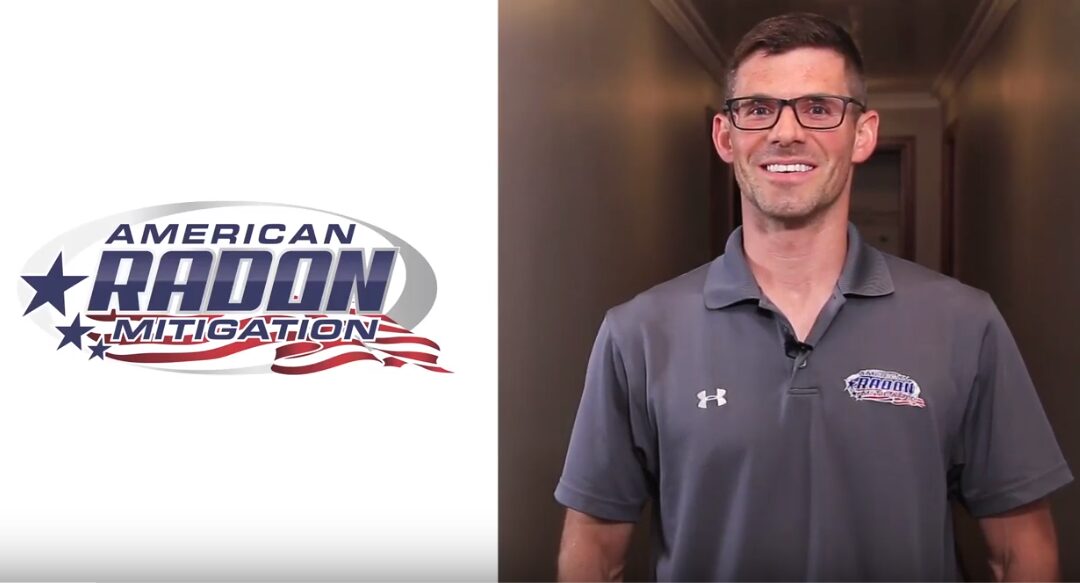
by Desmond Thornton | Jan 27, 2020 | First Home Buyers, Home Inspections, Home Maintenance, Informational Material, Uncategorized
Radon mitigation is any process used to reduce radon gas concentrations in the breathing zones of occupied buildings, or radon from water supplies. Radon is a significant contributor to environmental radioactivity. Mitigation of radon in the air is accomplished through ventilation, either collected below a concrete floor slab or a membrane on the ground or by increasing the air changes per hour in the building. Treatment systems using aeration or activated charcoal are available to remove radon from domestic water supplies. Because high levels of radon have been found in every state of the United States, testing for radon and installing radon mitigation systems has become a specialized industry since the 1980s. Many states have implemented programs that affect home buying and awareness in the real estate community, however, radon testing and mitigation systems are not generally mandatory unless specified by a local jurisdiction.
According to the EPA’s “A Citizen’s Guide to Radon, the method to reduce radon “primarily used is a vent pipe system and fan, which pulls radon from beneath the house and vents it to the outside”, which is also called sub-slab depressurization, soil suction, or active soil depressurization. Generally, indoor radon can be mitigated by sub-slab depressurization and exhausting such radon-laden air to the outdoors, away from windows and other building openings. EPA generally recommends methods that prevent the entry of radon. Soil suction, for example, prevents radon from entering your home by drawing the radon from entering your home and venting it through a pipe, or pipes, to the air above the home where it is quickly diluted and EPA does not recommend the use of sealing alone to reduce radon because, by itself, sealing has not been shown to lower radon levels significantly or consistently according to the EPA’s “Consumer’s Guide to Radon Reduction: How to fix your home.
Ventilation systems can utilize a heat exchanger or energy recovery ventilator to recover part of the energy otherwise lost in the process of exchanging air with the outside. For crawl spaces, the EPA states, An effective method to reduce radon levels in crawlspace homes involves covering the earth floor with a high-density plastic sheet. A vent pipe and fan are used to draw the radon from under the sheet and vent it to the outdoors. This form of soil suction is called sub-membrane suction, and when properly applied is the most effective way to reduce radon levels in crawlspace homes.”
- The most common approach is the active soil depressurization(ASD). Experience has shown that ASD is applicable to most buildings since radon usually enters from the soil and rock underneath and mechanical ventilation (MV) is used when the indoor radon is emitted from the building materials. A less common approach works efficiently by reducing air pressures within cavities of exterior and demising walls where radon emitting from building materials, most often concrete blocks collect.
- In hot, humid climates heat recovery ventilators (HRV), as well as energy recovery ventilators (ERV), have a record of increasing indoor relative humidity and dehumidification demands on air conditioning systems. Mold problems have originated in homes that have been radon mitigated with HRV and ERVs have an excellent record in heating climates.
- A recent technology is based on building science. It includes a variable rate mechanical ventilation system that prevents indoor relative humidity from rising above the present level such as 50% which is currently suggested by the US Environmental Protection Agency and others as an upper limit for the prevention of mold. It has proven to be especially effective in hot, humid climates. It controls the air delivery rate so that the air conditioner is never overloaded with more moisture than it can effectively remove from the indoor air.
- It is generally assumed that air conditioner operation will remove excess moisture from the air in the breathing zone, but it is important to note that just because the air conditioner cools does not mean that it is also dehumidifying. If it is 14 degrees or less, it may not dehumidify at all even though it is cooling.
- Factors that are likely to aggravate indoor humidity problems from mechanical ventilation-based radon installations are as follows and an expert radon mitigation/building scientist will check for and correct any and all of the following when he or she performs radon mitigation procedures:
- Air conditioner duct leaks located outside the breathing zone, such as in the attic.
- Excessive exhaust fan operation
- Oversized or over-capacity air conditioners
- AC air handler fans do not stop running when the air conditioner compressor stops running.
- Delta, which is the amount that the air-cooled as it is passed through the air conditioner’s cooling coils. A good delta performance figure for home air conditioners is about 20F in comparison, automobile air conditioners deliver delta performance of 32 to 38f. A delta of 14f will dehumidify poorly if at all.
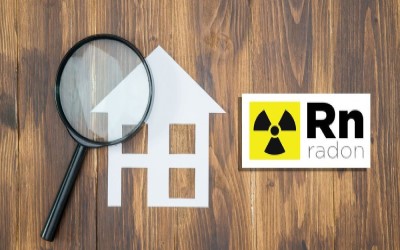
by Desmond Thornton | Jan 20, 2020 | First Home Buyers, Home Inspections, Informational Material
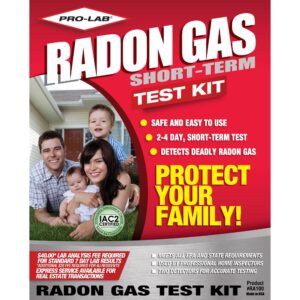
Short-term tests:
These are useful to see if further testing is warranted. Most are activated charcoal-based or use electret ion levels for two to seven days. You can mail your tests to a lab for the results. Short-term tests are available at home centers, hardware stores, and online retailers.
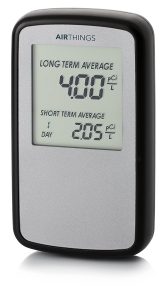
Long-term radon tests:
These radon tests measure levels for 90 days to one year. Most, such as the Airthings Corentium Home Model – Digital Radon Detector test, is based on alpha particle tracking. This is a more accurate indicator of average annual levels, which can vary significantly from day to day and month to month based on factors such as a drop in air pressure, gusty winds, variable soil moisture, and snow cover, which traps radon gases. Long-term radon tests are available through state radon agencies and online retailers.
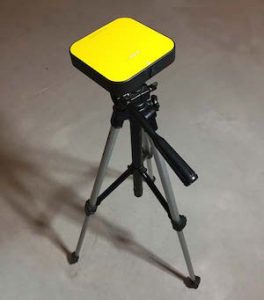
Continuous radon tests:
Electric monitors, such as the Airthings Corentium Pro Digital Radon Monitor, Portable. These can be used for both short-term and long-term testing to give you a running average every day.
When an initial short-term test registers 4 pCi/l or higher, the EPA recommends doing a 2nd radon test. A long-term test will give you the most accurate information, but the short-term test is acceptable if you need the results quickly, such as for a real estate transaction, or your first levels registered 8 pCi/l or higher. If a second test registers about 4 pCi/L, consider taking steps to reduce radon levels in your home, the EPA cautions. If your home has high levels of radon, you can start by trying these easy repairs to reduce radon levels. These efforts alone rarely reduce levels significantly, but if your level is only slightly elevated, these repairs might make a difference. They will also make out her radon reduction methods more effective and cost-efficient
- Caulk foundation cracks, construction joints, and other openings with polyurethane caulk.
- If you have a sump pump, install an airtight cover on it (choose one that allows access to your sump).
- Cover soil in crawl spaces with polyurethane plastic sheeting ( with a minimum thickness of 6 mils, available at home centers) tightly attached to the walls.
- You can also try sealing concrete, although the EPA has found concrete sealers to be a temporary solution at best.
Once you’ve tackled this, retest the home. If levels are still high, consider contacting a pro.





